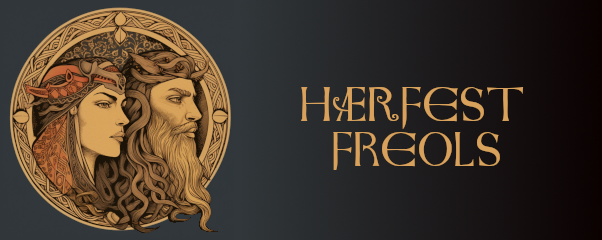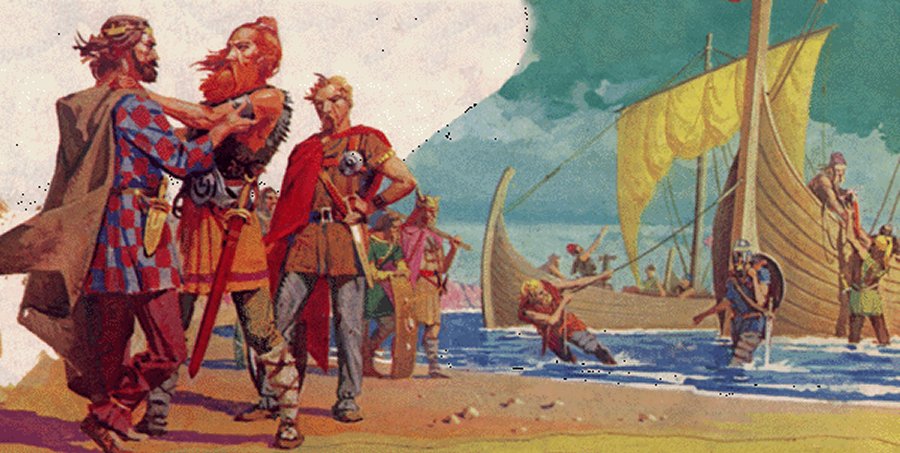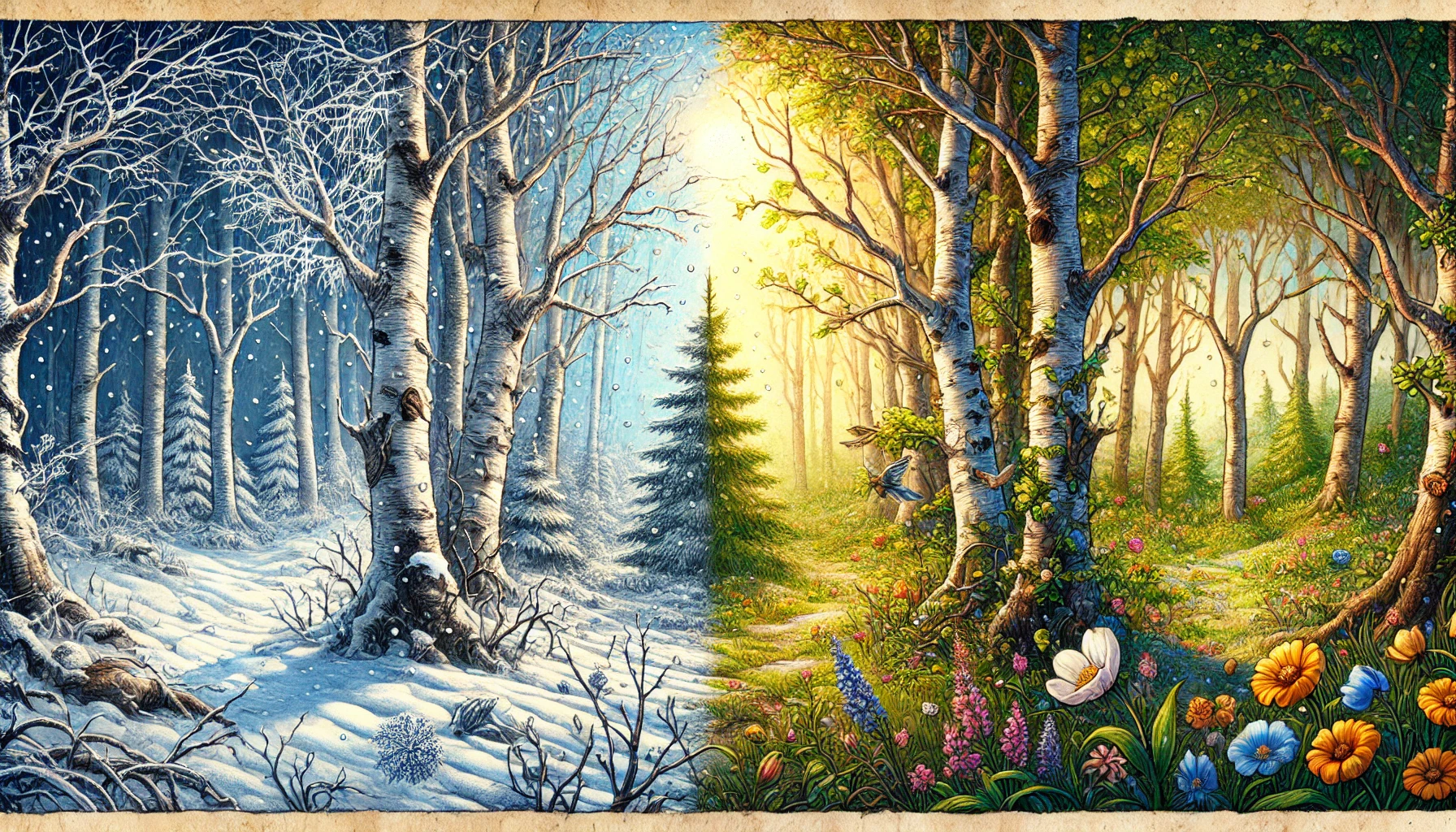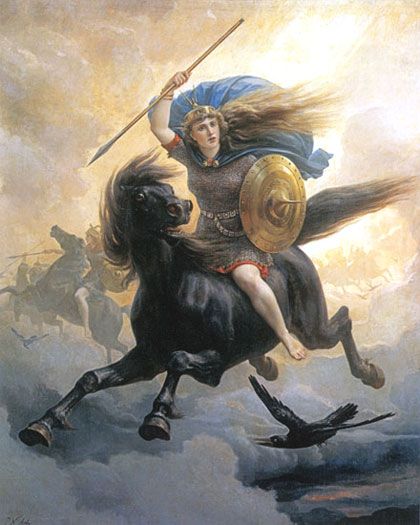This post serves as a ritual template for a Harvest festival celebration. It outlines the structure of the ceremony, beginning with opening words that set the context and purpose of the gathering. Participants take part in a series of pourings and prayers, offering libations to deities like Woden and Frig, with a special blessing ceremony. Following these rituals, the community enjoys a communal feast, known as ‘Húselgang.’ This template provides a guide for crafting a meaningful Harvest festival rooted in historical traditions and reverence for the harvest and the deities associated with it.
Altar Decor and Regalia:
Wheat and Grain Sheaves: Place bundles of wheat and other grains on the altar. These sheaves represent the bountiful harvest and are a direct offering to Woden and Frigga. You can tie them together with colorful ribbons or twine.
Images or Statues: If you have images or statues of Woden and Frigga, place them on the altar as the central focus. These representations can be adorned with garlands of wheat or grain to symbolize their connection to the harvest.
Candles: Use candles in earthy colors such as brown, green, and gold to represent the grain fields and the fertile earth. Light these candles during the ritual to honor the deities.
Offering Bowls: Set out bowls filled with grains, such as wheat or barley, as offerings to Woden and Frig. You can also include a separate bowl of water or mead to represent the liquid offerings traditionally given.
Fruit and Vegetables: Include fruits and vegetables associated with the harvest season, like apples, grapes, and pumpkins. These can be placed around the altar to further symbolize the abundance of the season.
Flowers: Fresh flowers in fall colors like orange, red, and yellow can add vibrancy to the altar. You can also incorporate dried flowers or herbs like lavender for a rustic touch.
Animal Symbols: As horses were associated with Woden, you can add small horse figurines or images to represent Woden’s mythical steed. For Frig, consider adding swan or falcon imagery, as she is sometimes associated with these birds.
Altar Cloth: Use a cloth with earthy or harvest-themed patterns as the base for your altar. It can serve as a backdrop for the other decorations and tie the theme together.
Offering Dish: Place a special dish or container on the altar for any liquid offerings you may want to make during the ritual.
Remember that the altar’s decoration should reflect your reverence and gratitude for Woden and Frig’s roles in the harvest. Feel free to adapt these suggestions to your personal preferences and the specific traditions and symbolism that resonate with you and your group.
Opening Words:
The Blótere, the one leading this celebration, stands before the gathered participants and speaks:
“Today, we gather to celebrate the bountiful harvest and to honor Woden, the Allfather, and Frig, the Goddess of Fertility. We offer our gratitude for the gifts of the Earth and seek their blessings upon our community. Let us come together in reverence and joy.”
First Pouring:
The Blótere takes a cup or horn filled with the ritual beverage and offers the first prayer:
“Great Woden, wise and mighty, we offer you this libation as a token of our respect and devotion. May your wisdom guide us through the coming seasons.”
Then raising the horn or cup in tribute:
“Woden, Woden, Woden!
The Heaven-Giant knows what happens here;
From Heaven downwards he does peer.
He has full pitchers and sheaves.
In the wood grows many a thing with leaves.
He ne’er was child, and ne’er grows old,
Woden, Woden, Woden!”
The Blótere then drinks, pours a portion for Woden, and passes the cup or horn to the next celebrant, who offers their prayer, and so on, until all have spoken.
Second Pouring (Honoring Frig):
The Blótere refills the cup or horn and begins the second pouring:
“Gentle Frig, Queen of Heaven, we offer you this libation as a symbol of our appreciation for your nurturing care. May our fields be ever fertile, and our homes filled with abundance.”
Then raising the horn or cup on high:
“Frig, Frig, Frig! This year on the cart, the next upon the Wagon!”
After an offering is poured, the cup or horn is passed again, and each participant offers their prayer.
Blessing (Bletsung):
For the blessing, the Blótere takes an evergreen sprig and dips it into the ritual liquid. As they do so, they speak:
“We invoke the presence of Woden and Frig, and with this sacred sprig, we symbolically sprinkle their blessings upon this gathering and upon ourselves.”
The Blótere then sprinkles the liquid first on the altar, then over the assembled celebrants, invoking the gods’ blessings.
Húselgang (The Greater Blót):
Following the offerings and blessings, the assembly gathers to enjoy a feast in celebration. This feast can be pot-luck style, with participants contributing dishes to share. During the meal, consider including poetry readings, music, or storytelling to enhance the experience and honor the tradition.




